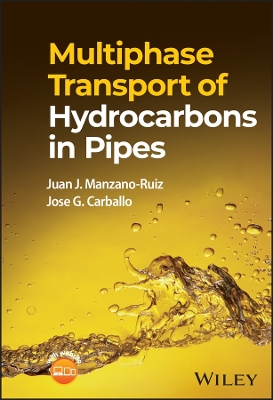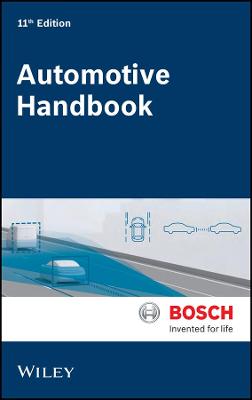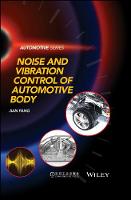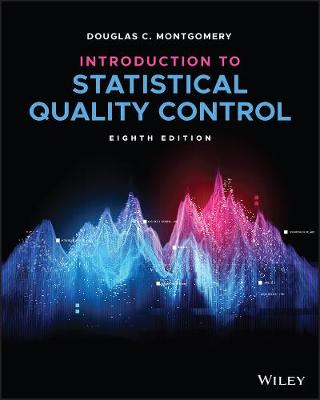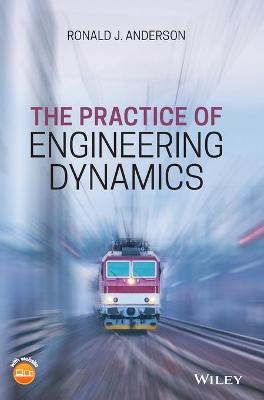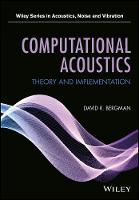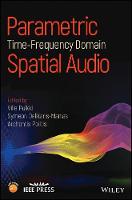Vibroacoustic Simulation
 -15%
portes grátis
-15%
portes grátis
Vibroacoustic Simulation
An Introduction to Statistical Energy Analysis and Hybrid Methods
Peiffer, Alexander
John Wiley & Sons Inc
05/2022
480
Dura
Inglês
9781119849841
15 a 20 dias
992
Acknowledgments xix
Acronyms xxi
1 Linear Systems, Random Process and Signals 1
1.1 The Damped Harmonic Oscillator 1
1.2 Forced Harmonic Oscillator 5
1.3 Two Degrees of Freedom Systems (2DOF) 15
1.4 Multiple Degrees of Freedom Systems MDOF 20
1.5 Random Process 27
1.6 Systems 34
1.7 Multiple-input--multiple-output Systems 37
2 Waves in Fluids 43
2.1 Introduction 43
2.2 Wave Equation for Fluids 43
2.3 Solutions of the Wave Equation 48
2.4 Fundamental Acoustic Sources 53
2.5 Reflection of Plane Waves 59
2.6 Reflection and Transmission of Plane Waves 60
2.7 Inhomogeneous Wave Equation 62
2.8 Units, Measures, and levels 72
3 Wave Propagation in Structures 75
3.1 Introduction 75
3.2 Basic Equations and Definitions 76
3.3 Wave Equation 83
3.4 Waves in Infinite Solids 87
3.5 Beams 88
3.6 Membranes 99
3.7 Plates 101
3.8 Propagation of Energy in Dispersive Waves 115
3.9 Findings 116
4 Fluid Systems 119
4.1 One-dimensional Systems 119
4.2 Three-dimensional Systems 128
4.3 Numerical Solutions 139
4.4 Reciprocity 142
5 Structure Systems 145
5.1 Introduction 145
5.2 One-dimensional Systems 146
5.3 Two-dimensional Systems 151
5.4 Reciprocity 155
5.5 Numerical Solutions 156
6 Random Description of Systems 159
6.1 Diffuse Wave Field 160
6.2 Ensemble Averaging of Deterministic Systems 169
6.3 One-Dimensional Systems 169
6.4 Two-Dimensional Systems 178
6.5 Three-Dimensional Systems -- Cavities 182
6.6 Surface Load of Diffuse Acoustic Fields 188
6.7 Mode Wave Duality 189
6.8 SEA System Description 192
7 Coupled Systems 201
7.1 Deterministic Subsystems and their Degrees of Freedom 202
7.2 Coupling Deterministic Systems 202
7.3 Coupling Random Systems 206
7.4 Hybrid FEM/SEA Method 213
7.5 Hybrid Modelling in Modal Coordinates 220
8 Coupling Loss Factors 223
8.1 Transmission Coefficients and Coupling Loss Factors 224
8.2 Radiation Stiffness and Coupling Loss Factors 227
9 Deterministic Applications 271
9.1 Acoustic One-Dimensional Elements 271
9.2 Coupled One-Dimensional Systems 286
9.3 Infinite Layers 296
9.4 Acoustic Absorber 302
9.5 Acoustic Wall Constructions 308
10 Application of Random systems 319
10.1 Frequency Bands for SEA Simulation 319
10.2 Fluid Systems 320
10.3 Algorithms of SEA 323
10.4 Coupled Plate Systems 324
10.5 Fluid-Structure Coupled Systems 327
11 Hybrid Systems 343
11.1 Hybrid SEA Matrix 343
11.2 Twin Chamber 343
11.3 Trim in Hybrid Theory 350
12 Industrial Cases 359
12.1 Simulation Strategy 359
12.2 Aircraft 361
12.3 Automotive 372
12.4 Trains 380
12.5 Summary 394
13 Conclusions and Outlook 399
13.1 Conclusions 399
13.2 What Comes Next? 399
13.3 Experimental Methods 399
13.4 Further Reading on Simulation 404
13.5 Energy Flow Method and Influence Coefficient 404
13.6 Vibroacoustics Simulation Software 406
A Basic Mathematics 411
A.1 Fourier Analysis 411
A.2 Discrete Signal Analysis 418
A.3 Coordinate Transformation of Discrete Equation of Motion 423
Bibliography 424
B Specific Solutions 425
B.1 Second Moments of Area 425
B.2 Wave Transmission 426
B.3 Conversion Formulas of Transfer Matrix 436
Bibliography 437
C Symbols 439
Index 445
Acknowledgments xix
Acronyms xxi
1 Linear Systems, Random Process and Signals 1
1.1 The Damped Harmonic Oscillator 1
1.2 Forced Harmonic Oscillator 5
1.3 Two Degrees of Freedom Systems (2DOF) 15
1.4 Multiple Degrees of Freedom Systems MDOF 20
1.5 Random Process 27
1.6 Systems 34
1.7 Multiple-input--multiple-output Systems 37
2 Waves in Fluids 43
2.1 Introduction 43
2.2 Wave Equation for Fluids 43
2.3 Solutions of the Wave Equation 48
2.4 Fundamental Acoustic Sources 53
2.5 Reflection of Plane Waves 59
2.6 Reflection and Transmission of Plane Waves 60
2.7 Inhomogeneous Wave Equation 62
2.8 Units, Measures, and levels 72
3 Wave Propagation in Structures 75
3.1 Introduction 75
3.2 Basic Equations and Definitions 76
3.3 Wave Equation 83
3.4 Waves in Infinite Solids 87
3.5 Beams 88
3.6 Membranes 99
3.7 Plates 101
3.8 Propagation of Energy in Dispersive Waves 115
3.9 Findings 116
4 Fluid Systems 119
4.1 One-dimensional Systems 119
4.2 Three-dimensional Systems 128
4.3 Numerical Solutions 139
4.4 Reciprocity 142
5 Structure Systems 145
5.1 Introduction 145
5.2 One-dimensional Systems 146
5.3 Two-dimensional Systems 151
5.4 Reciprocity 155
5.5 Numerical Solutions 156
6 Random Description of Systems 159
6.1 Diffuse Wave Field 160
6.2 Ensemble Averaging of Deterministic Systems 169
6.3 One-Dimensional Systems 169
6.4 Two-Dimensional Systems 178
6.5 Three-Dimensional Systems -- Cavities 182
6.6 Surface Load of Diffuse Acoustic Fields 188
6.7 Mode Wave Duality 189
6.8 SEA System Description 192
7 Coupled Systems 201
7.1 Deterministic Subsystems and their Degrees of Freedom 202
7.2 Coupling Deterministic Systems 202
7.3 Coupling Random Systems 206
7.4 Hybrid FEM/SEA Method 213
7.5 Hybrid Modelling in Modal Coordinates 220
8 Coupling Loss Factors 223
8.1 Transmission Coefficients and Coupling Loss Factors 224
8.2 Radiation Stiffness and Coupling Loss Factors 227
9 Deterministic Applications 271
9.1 Acoustic One-Dimensional Elements 271
9.2 Coupled One-Dimensional Systems 286
9.3 Infinite Layers 296
9.4 Acoustic Absorber 302
9.5 Acoustic Wall Constructions 308
10 Application of Random systems 319
10.1 Frequency Bands for SEA Simulation 319
10.2 Fluid Systems 320
10.3 Algorithms of SEA 323
10.4 Coupled Plate Systems 324
10.5 Fluid-Structure Coupled Systems 327
11 Hybrid Systems 343
11.1 Hybrid SEA Matrix 343
11.2 Twin Chamber 343
11.3 Trim in Hybrid Theory 350
12 Industrial Cases 359
12.1 Simulation Strategy 359
12.2 Aircraft 361
12.3 Automotive 372
12.4 Trains 380
12.5 Summary 394
13 Conclusions and Outlook 399
13.1 Conclusions 399
13.2 What Comes Next? 399
13.3 Experimental Methods 399
13.4 Further Reading on Simulation 404
13.5 Energy Flow Method and Influence Coefficient 404
13.6 Vibroacoustics Simulation Software 406
A Basic Mathematics 411
A.1 Fourier Analysis 411
A.2 Discrete Signal Analysis 418
A.3 Coordinate Transformation of Discrete Equation of Motion 423
Bibliography 424
B Specific Solutions 425
B.1 Second Moments of Area 425
B.2 Wave Transmission 426
B.3 Conversion Formulas of Transfer Matrix 436
Bibliography 437
C Symbols 439
Index 445




